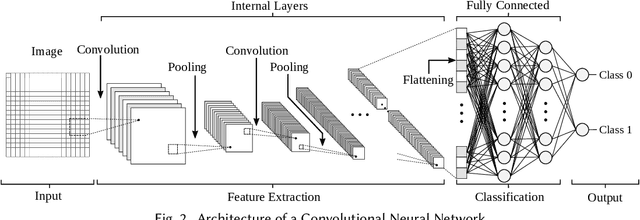Lennart M. Reimann
Logic Locking at the Frontiers of Machine Learning: A Survey on Developments and Opportunities
Jul 21, 2021



Abstract:In the past decade, a lot of progress has been made in the design and evaluation of logic locking; a premier technique to safeguard the integrity of integrated circuits throughout the electronics supply chain. However, the widespread proliferation of machine learning has recently introduced a new pathway to evaluating logic locking schemes. This paper summarizes the recent developments in logic locking attacks and countermeasures at the frontiers of contemporary machine learning models. Based on the presented work, the key takeaways, opportunities, and challenges are highlighted to offer recommendations for the design of next-generation logic locking.
Deceptive Logic Locking for Hardware Integrity Protection against Machine Learning Attacks
Jul 19, 2021



Abstract:Logic locking has emerged as a prominent key-driven technique to protect the integrity of integrated circuits. However, novel machine-learning-based attacks have recently been introduced to challenge the security foundations of locking schemes. These attacks are able to recover a significant percentage of the key without having access to an activated circuit. This paper address this issue through two focal points. First, we present a theoretical model to test locking schemes for key-related structural leakage that can be exploited by machine learning. Second, based on the theoretical model, we introduce D-MUX: a deceptive multiplexer-based logic-locking scheme that is resilient against structure-exploiting machine learning attacks. Through the design of D-MUX, we uncover a major fallacy in existing multiplexer-based locking schemes in the form of a structural-analysis attack. Finally, an extensive cost evaluation of D-MUX is presented. To the best of our knowledge, D-MUX is the first machine-learning-resilient locking scheme capable of protecting against all known learning-based attacks. Hereby, the presented work offers a starting point for the design and evaluation of future-generation logic locking in the era of machine learning.
Challenging the Security of Logic Locking Schemes in the Era of Deep Learning: A Neuroevolutionary Approach
Nov 30, 2020



Abstract:Logic locking is a prominent technique to protect the integrity of hardware designs throughout the integrated circuit design and fabrication flow. However, in recent years, the security of locking schemes has been thoroughly challenged by the introduction of various deobfuscation attacks. As in most research branches, deep learning is being introduced in the domain of logic locking as well. Therefore, in this paper we present SnapShot: a novel attack on logic locking that is the first of its kind to utilize artificial neural networks to directly predict a key bit value from a locked synthesized gate-level netlist without using a golden reference. Hereby, the attack uses a simpler yet more flexible learning model compared to existing work. Two different approaches are evaluated. The first approach is based on a simple feedforward fully connected neural network. The second approach utilizes genetic algorithms to evolve more complex convolutional neural network architectures specialized for the given task. The attack flow offers a generic and customizable framework for attacking locking schemes using machine learning techniques. We perform an extensive evaluation of SnapShot for two realistic attack scenarios, comprising both reference benchmark circuits as well as silicon-proven RISC-V core modules. The evaluation results show that SnapShot achieves an average key prediction accuracy of 82.60% for the selected attack scenario, with a significant performance increase of 10.49 percentage points compared to the state of the art. Moreover, SnapShot outperforms the existing technique on all evaluated benchmarks. The results indicate that the security foundation of common logic locking schemes is build on questionable assumptions. The conclusions of the evaluation offer insights into the challenges of designing future logic locking schemes that are resilient to machine learning attacks.
 Add to Chrome
Add to Chrome Add to Firefox
Add to Firefox Add to Edge
Add to Edge